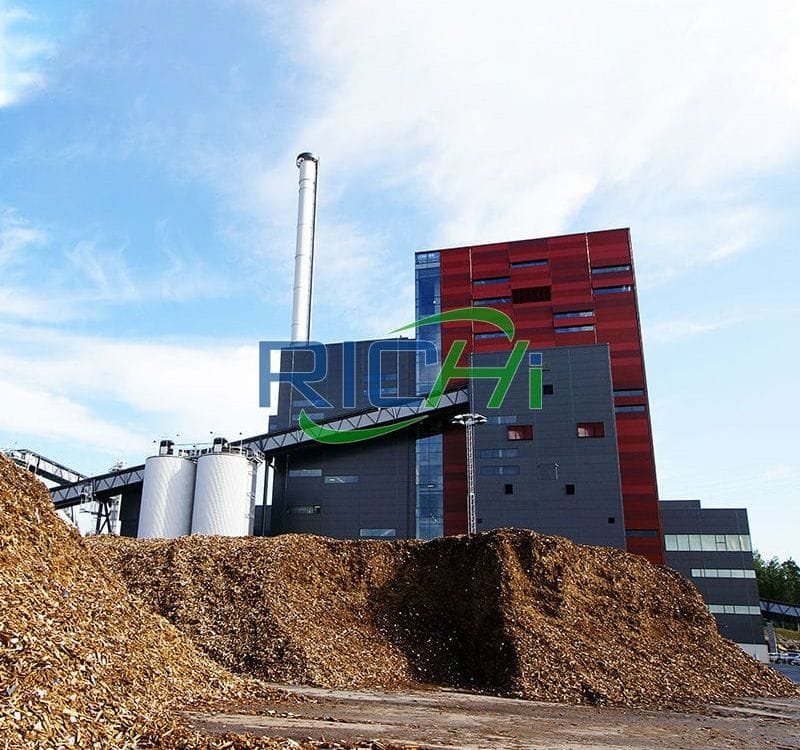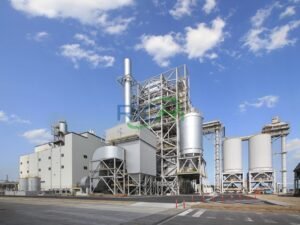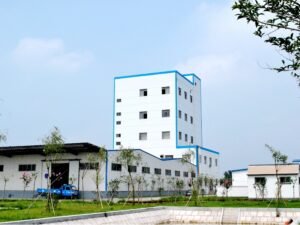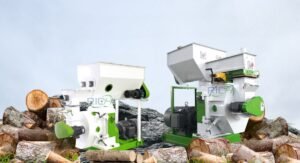
In the ever-growing landscape of renewable energy and sustainable practices, wood pellets have emerged as a versatile and environmentally friendly fuel source. These dense, cylindrical pellets, made from compressed biomass materials such as wood waste, sawdust, and agricultural residues, offer a cost-effective and carbon-neutral alternative to traditional fossil fuels.
While large-scale wood pellet plants are prevalent in the industry, there is a growing demand for smaller, localized facilities that cater to niche markets or serve as a starting point for entrepreneurs and businesses venturing into the wood pellet production sector. Building a small wood pellet plant can be a rewarding endeavor, providing economic opportunities, promoting resource efficiency, and contributing to the transition towards a more sustainable future.
In this article, we’ll guide you through the step-by-step process of building a small wood pellet plant, covering essential considerations, equipment requirements, and best practices to ensure a successful and efficient operation.
Step 1: Feasibility Study and Market Analysis
Before embarking on the construction of a small wood pellet plant, it’s crucial to conduct a comprehensive feasibility study and market analysis. This step involves assessing the demand for wood pellets in your local or regional market, analyzing the competition, and evaluating the availability and cost of raw materials (such as wood waste, sawdust, or agricultural residues).
Additionally, the feasibility study should consider factors such as regulatory requirements, environmental impact assessments, and potential financing options. By thoroughly evaluating these aspects, you can make informed decisions and develop a solid business plan for your small wood pellet plant.
Step 2: Site Selection and Facility Design
Once the feasibility study and market analysis have been completed, the next step is to select an appropriate site for your small wood pellet plant. Factors such as proximity to raw material sources, transportation infrastructure, access to utilities (water, electricity, and natural gas), and zoning regulations should be carefully considered.
After selecting the site, the facility design phase begins. This involves developing detailed plans and layouts for the various components of the plant, including raw material storage areas, processing lines, packaging and warehousing facilities, and administrative offices. Engaging experienced architects and engineers is crucial to ensure compliance with building codes, safety regulations, and industry best practices.
Related post: https://www.richipelletmachine.com/wood-pellet-production-line/
Step 3: Equipment Procurement and Installation
At the heart of any wood pellet plant lies the specialized equipment required for processing raw materials into finished pellets. For a small plant, essential equipment may include:
- Biomass Shredder or Chipper: To reduce the size of raw materials and prepare them for the pelletizing process.
- Hammer Mill or Grinder: To further grind the biomass into a fine, consistent particle size.
- Dryer: To reduce the moisture content of the biomass to optimal levels for pelletizing.
- Pellet Mill: The core equipment responsible for compressing and extruding the biomass into dense pellets.
- Cooler: To cool the hot pellets after extrusion and stabilize them for packaging.
- Packaging and Bagging Equipment: To package the finished pellets for storage or distribution.
Sourcing high-quality equipment from reputable manufacturers is crucial for ensuring efficient and reliable operations. Additionally, proper installation and integration of the various components are essential for a smooth production process.
Step 4: Utilities and Infrastructure Setup
Alongside the installation of processing equipment, the setup of utilities and supporting infrastructure is a critical step in building a small wood pellet plant. This includes establishing connections to water, electricity, and natural gas supplies, as well as implementing waste management systems and environmental controls.
Additionally, this step may involve the construction of ancillary facilities such as boiler rooms, maintenance workshops, and laboratories for quality control and testing. Ensuring compliance with local and national regulations regarding utilities, emissions, and environmental impact is paramount during this phase.
Step 5: Staffing and Training
The success of a small wood pellet plant heavily relies on the expertise and competence of its workforce. This step involves recruiting skilled personnel, such as plant operators, maintenance technicians, and quality control specialists.
Comprehensive training programs should be developed and implemented to ensure that all staff members are proficient in operating and maintaining the equipment, adhering to safety protocols, and following quality control procedures. Ongoing training and professional development opportunities should also be provided to keep the workforce up-to-date with industry advancements and best practices.
Step 6: Quality Control and Regulatory Compliance
Wood pellets are subject to stringent quality control measures and regulatory compliance to ensure the safety and performance of the final product. Establishing robust quality control systems and procedures is an essential step in building a small wood pellet plant.
This may involve implementing sampling and testing protocols, maintaining detailed records and documentation, and adhering to industry standards and regulations regarding product specifications, labeling, and storage. Additionally, obtaining necessary certifications and licenses from relevant authorities is crucial for legal and ethical operations.
Step 7: Marketing and Distribution
Once your small wood pellet plant is operational, it’s essential to develop effective marketing and distribution strategies to reach your target customers. This may involve establishing partnerships with local retailers, exploring online sales channels, or participating in industry events and trade shows to promote your products.
Additionally, consider implementing sustainable packaging and transportation methods to align with the environmentally friendly nature of your wood pellet products and appeal to eco-conscious consumers.
Step 8: Continuous Improvement and Expansion
Building a small wood pellet plant is not a one-time endeavor; it requires ongoing efforts to optimize operations, improve efficiency, and adapt to changing market demands and regulatory landscapes. Implementing a culture of continuous improvement and embracing technological advancements is essential for the long-term success of your plant.
This may involve regularly reviewing and updating processes, investing in equipment upgrades or replacements, exploring alternative raw materials or formulations, and implementing data-driven decision-making processes. As your business grows, you may also consider expanding your production capacity or diversifying your product offerings to meet increasing demand.
By following these steps and adhering to industry best practices, you can successfully build and operate a small wood pellet plant, contributing to the growth of the renewable energy sector, promoting resource efficiency, and supporting sustainable development in your local community.






